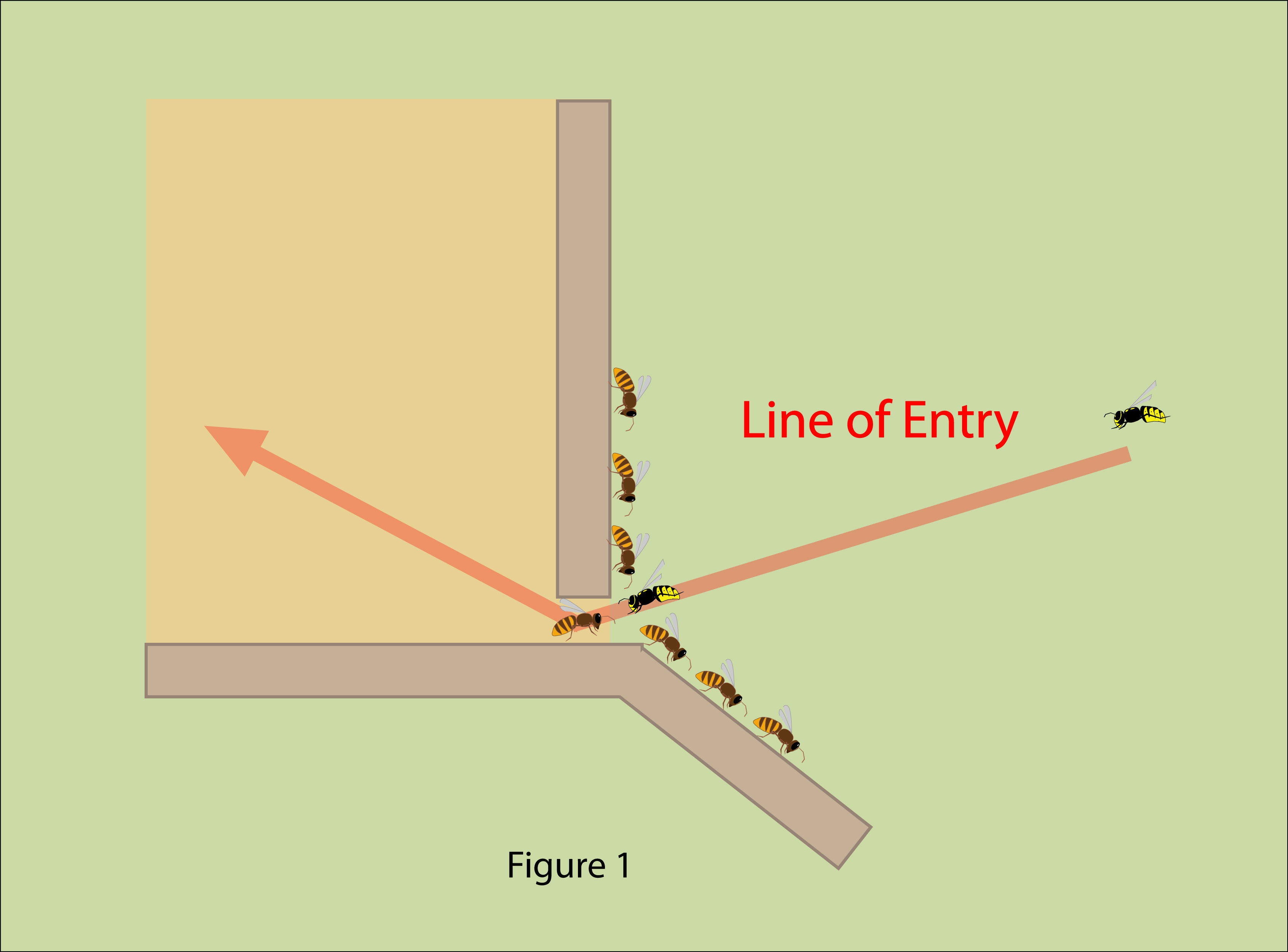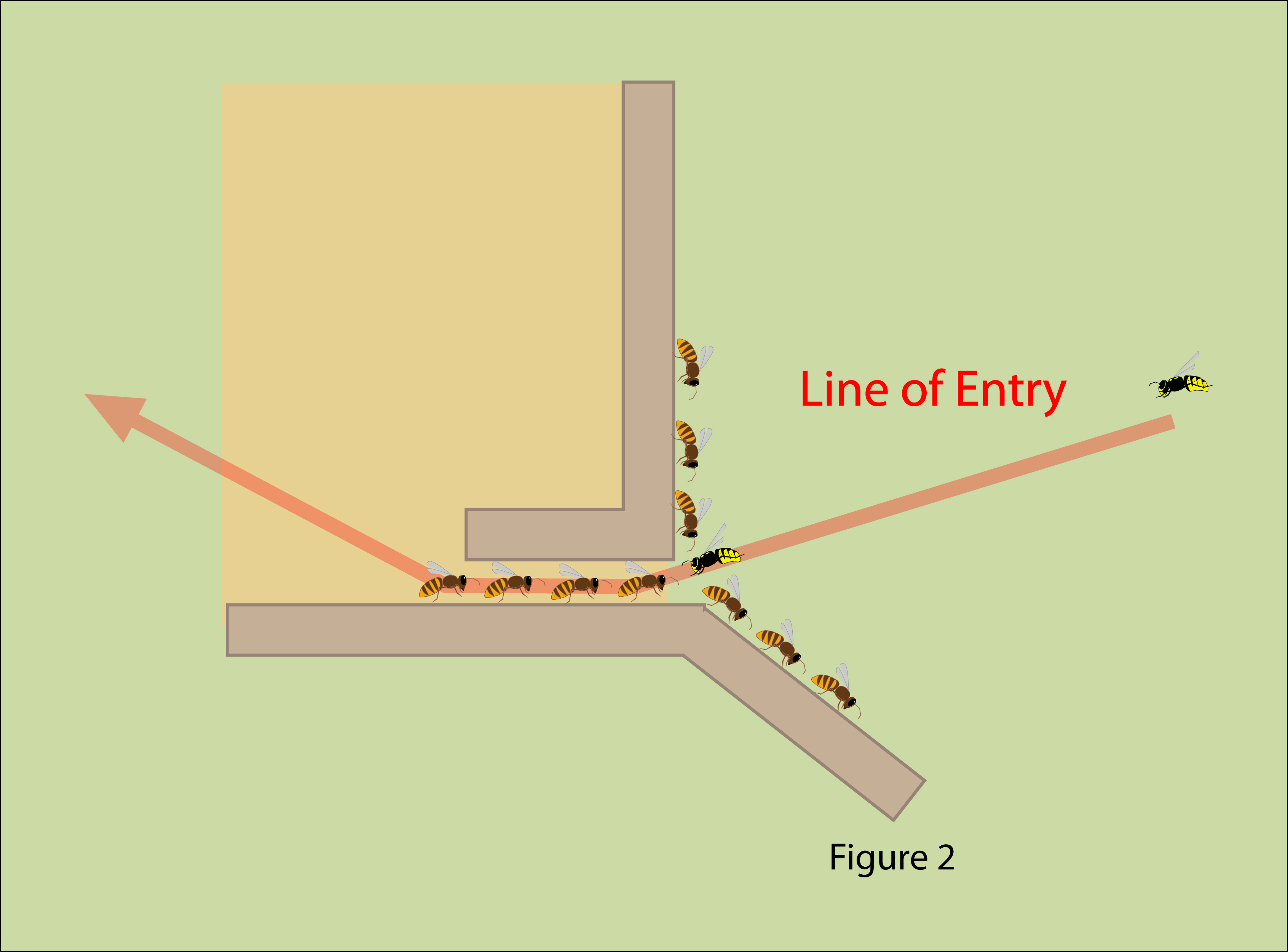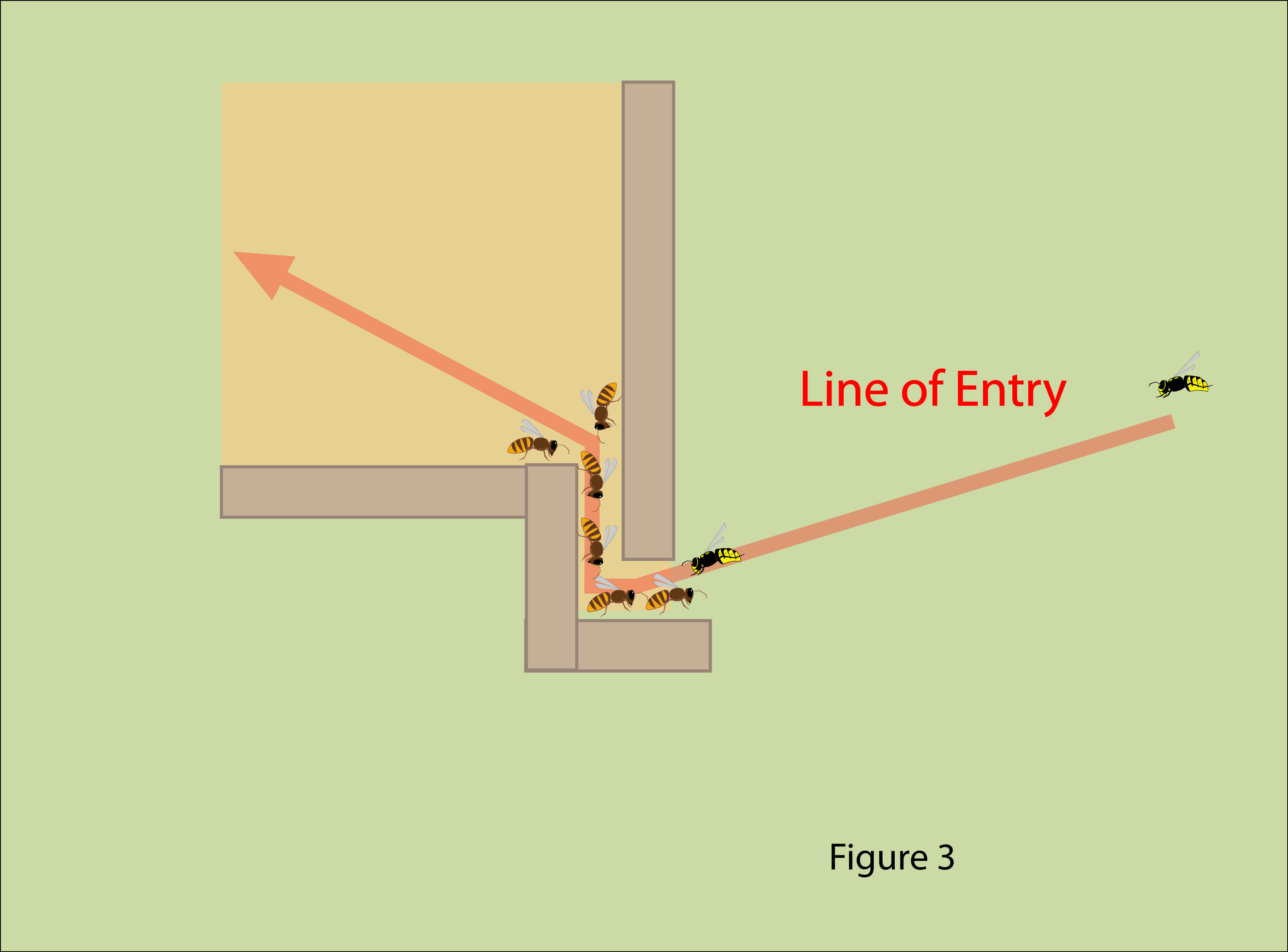Wasp proofing hives is a two fold process.
Reducing Attractiveness
Every endeavour should be made to reduce the attractiveness of hives to wasps which requires an understanding of why wasps might come to a bee hive. Properly maintaining bee hives to seal untreated exposed wood is a form of wasp proofing.
The most likely reason that wasps will visit a hive is to sweet feed which usually does not happen much before the third week in July (Northern hemisphere). Considerable thought should be given to reducing the number of plumes of sweet aroma emanating from an apiary to reduce the overall attractiveness of the hives. The more plumes of aroma the more channels that wasps can follow to the hives and the harder it becomes to control them using WaspBane traps. (Positioning of WaspBane traps will be dealt with in later sections.)
Wherever possible extraneous sources of sugar should be removed from the apiary. For example if the hives are situated amongst fruit litter in an orchard then the apiary should be relocated (in future seasons) and in the mean time care should be taken to remove all fallen fruit litter.
Where hives have mesh floors and there is evidence of ‘sweet’ debris falling through onto the ground beneath and there is evidence that this is attracting wasps then the fallen ‘sweet’ debris should be periodically washed away with water. During honey harvest care should be taken to clear away spilled honey or dropped comb and spilled honey residues should be flushed away with water.
Where hives have more than one entrance then thought should be given to reducing the number of entrances to just one main entrance.
Other sources of sugar such as low efficiency wasp traps should be removed from the apiary.
Reducing Access
When wasps find a residual source of sugar they will communicate it back to their nest. It is imperative therefore that scouting wasps are either prohibited from gaining access to sweet foods in the vicinity of or from within the hive or prevented from communicating that food source back to their nest. Low efficiency wasp traps fail on both these counts and should therefore be avoided (see section ‘2.4.1 Other Traps’ for video evidence).
One of the most important strategies for reducing access is to control entrances to bee hives. This is not simply a matter of reducing the size of the entrance. What is important is understanding the line of entry and the extent to which honeybees can defend that line of entry.
In figure 1 below which shows the typical cross section of a reduced size entrance the depth of the entrance effectively remains at the thickness of the hive wall, i.e. approximately 13mm deep. This is equivalent to the depth of about one bee and therefore the line of entry is only effectively defended by one rank of honeybees. All the other honeybees that amass around the entrance to the hive are effectively circumnavigated if the attacking wasp flies directly to the entrance.
In Figure 2 below the depth of the entrance has been extended by using a wider strip of wood to effectively create a flat tunnel entrance. The line of entry is extended in the deeper entrance and attacking wasps therefore have to navigate through multiple ranks of defending honeybees and this makes it considerably easier for honeybees to repel invading wasps.
Placing a sheet of glass in front of the entrance to a hive has a similar effect to extending the depth of the entrance to a bee hive but is less controlled and therefore more likely to fail.
Another way to extend the line of entry is by using under floor entrances as shown in figure 3. This type of entrance also allows honeybees to defend the hive in multiple ranks making it harder for wasps to enter.

 Follow
Follow


